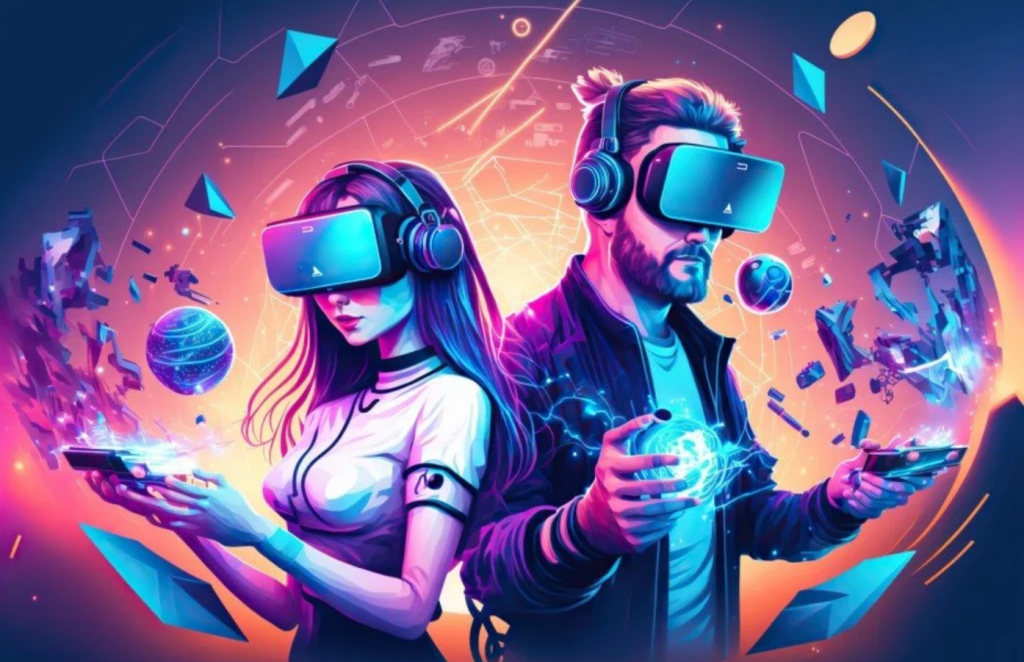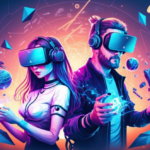Virtual Reality (VR) is no longer a concept confined to science fiction; it’s a rapidly growing technology that is transforming various aspects of our lives. From gaming and entertainment to education and healthcare, VR offers immersive experiences that were once unimaginable. This blog will delve into what Virtual Reality is, how it works, and its potential impact on different industries.
What is Virtual Reality?
Virtual Reality is a computer-generated environment that allows users to interact with a three-dimensional space as if they were physically present within it. By wearing a VR headset, users can look around, move within the simulated world, and interact with objects or other characters. The technology uses sensors, motion tracking, and haptic feedback to create a realistic experience, blurring the line between the virtual and real worlds.
How Does Virtual Reality Work?
The core of VR technology lies in the VR headset, which is equipped with screens for each eye, providing a stereoscopic effect. These screens display images that shift in real-time as the user moves their head, creating the illusion of depth and space. Motion sensors track the user’s movements, allowing them to interact with the virtual environment. Some VR systems also include hand controllers, gloves, or other devices to enhance the experience by providing tactile feedback.
Applications of Virtual Reality
- Gaming and Entertainment
- VR has revolutionized the gaming industry by offering players an immersive experience that traditional consoles can’t match. From exploring fantasy worlds to engaging in intense action scenes, VR games provide a level of engagement that draws players into the game like never before. Beyond gaming, VR is also being used in virtual concerts, movies, and art exhibitions.
- Education and Training
- Imagine being able to walk through ancient Rome, explore the human body, or practice complex surgical procedures without leaving the classroom. VR is making this possible by offering interactive learning experiences that engage students in new and exciting ways. In professional training, VR allows for safe, hands-on practice in fields like medicine, aviation, and military training.
- Healthcare
- VR is making significant strides in healthcare, offering therapeutic applications for patients with phobias, PTSD, or chronic pain. For instance, VR can be used in exposure therapy, where patients are gradually exposed to their fears in a controlled environment. Additionally, VR is being used in surgical training, allowing surgeons to practice procedures in a risk-free setting.
- Real Estate and Architecture
- VR is transforming the real estate industry by allowing potential buyers to take virtual tours of properties from anywhere in the world. Architects and designers are also using VR to create virtual models of buildings, enabling clients to walk through and make changes before construction begins.
- Social Interaction
- Virtual Reality is changing the way we connect with others. Virtual social platforms allow users to meet, interact, and collaborate in a shared virtual space. This has the potential to transform remote work, online education, and even socializing, as people can gather in virtual environments that feel real.
Challenges and Future Prospects
Despite its rapid growth, Virtual Reality still faces several challenges. High costs, limited content, and the need for powerful hardware are some of the barriers to widespread adoption. Additionally, issues like motion sickness and the potential for over-immersion are concerns that need to be addressed.
However, the future of VR looks promising. As technology continues to advance, we can expect more affordable and accessible VR systems, a broader range of applications, and improvements in user experience. The integration of Artificial Intelligence (AI) and Augmented Reality (AR) with VR could also lead to even more sophisticated and immersive experiences.
Conclusion
Virtual Reality is not just a technological trend; it’s a powerful tool that has the potential to reshape industries and change the way we experience the world. Whether it’s exploring new worlds in gaming, enhancing education, or providing new therapeutic options in healthcare, VR is opening up possibilities that were once beyond our reach. As we continue to explore and develop this technology, the line between the virtual and the real will continue to blur, leading us into an exciting new era.










